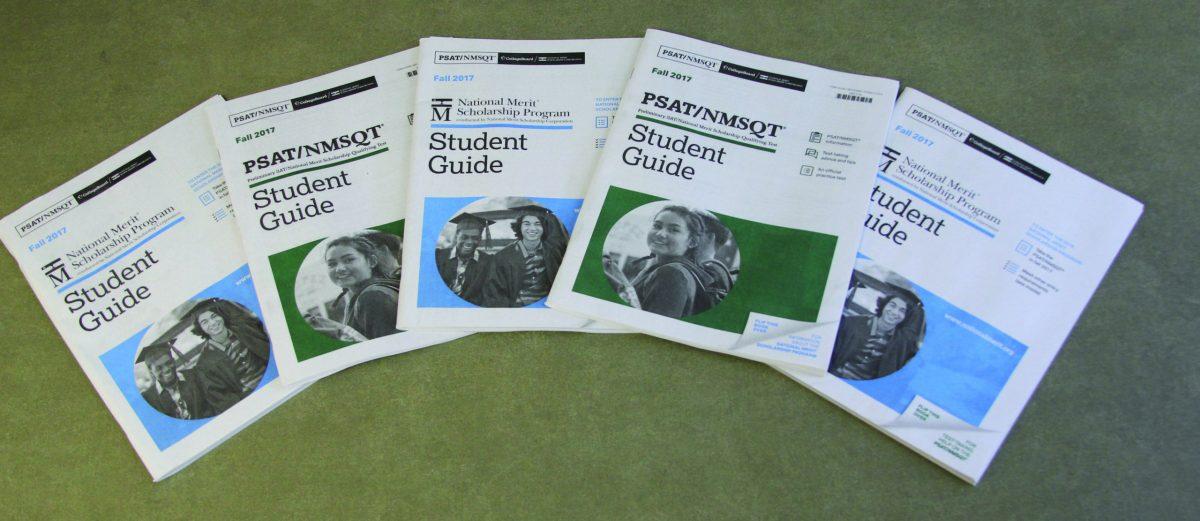Photo by Edwin Perez ’18 | PSAT booklets are ready to be handed out to students.
By Hayden Welty ’19
THE ROUNDUP
Current National Merit Scholarship distribution is inequitable, unfair and discriminatory; innovation must occur to maintain candor.
Testing reading and mathematics, the PSAT/NMSQT (Preliminary SAT or National Merit Scholarship Qualifying Test) is a two-hour and ten-minute exam administered by the College Board, which qualifies high achievers for a scholarship provided by the National Merit Scholarship Corporation.
Scored in two sections where one can earn between 160 and 760 points, it is a paper-based standardized test primarily given to high school sophomores and juniors.
The actual qualification for the scholarship is determined by a so-called “National Merit Index Score,” not the raw score out of 1520 points. One can only qualify for the merit program as a junior.
Each state has its own bar for qualification, depending on the number of tests administered and students’ performances in that state.
For example, in order to qualify as a semifinalist last year, a student from Wyoming would need to earn at least a 209 (index score), while a test taken in Phoenix would need to achieve a whopping 219.
Aside from being blatantly not equal and fair, the current metric hurts Arizonans especially, as even though we are ranking as one of the worst in education (43rd out of 50, according to U.S. News and World Report), our standards for this particular exam are in the top few states, meaning less prepared students must score significantly higher to qualify! How is this even possible?
Firstly, some public schools have decided to stop paying for their students to take the PSAT due to budget cuts and other monetary incentives. And many of the schools that still subsidize a part of the exam do so only for standout students, which improves the school’s rankings.
On top of this problem for Arizona students, in the last few years, the standards needed to qualify for student aid have become increasingly stratified: While states like California and New Jersey (who are both renowned for their excellent educational systems) have minimums well into the 220s–222 and 223, respectively–, others, namely Wyoming, West Virginia and South Dakota, have standards well below 210.
Quite frankly, this system is just not fair to students in both superior educational states and even those in lower-achieving states such as Arizona.
The College Board and the National Merit Scholarship Corporation have to alter their qualification system to a more equitable national standard in order to maintain integrity and fairness in this incredibly important scholarship program.

















